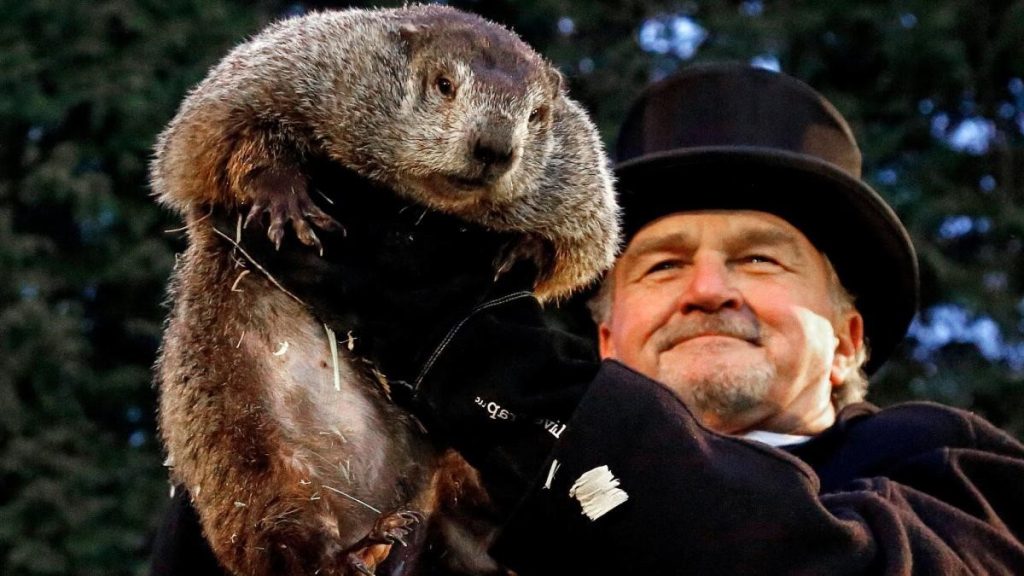Have you ever paused to wonder how a furry little creature like the groundhog became America's favorite weatherman? Every February 2nd, folks from all corners of the country turn their eyes toward Punxsutawney, Pennsylvania, where a seemingly ordinary groundhog named Phil holds the nation's springtime fate in his paws. This quirky tradition, known as Groundhog Day, has its roots tangled deep in European folklore and Christian customs, morphing from a serious weather prediction ritual into a beloved annual celebration. But how did this peculiar practice travel from old European lore to become a staple of American culture, complete with its own set of rituals and a celebrity rodent? And why do millions still hang on to the shadowy forecasts of a groundhog in an age dominated by advanced meteorological science? Let's burrow into the history of Groundhog Day, tracing its evolution from a simple observance to a nationwide phenomenon that captures the imagination and brings a touch of whimsy to the winter months.
Key Takeaway
Timeline
Day Activities
-
Morning Rituals: As dawn breaks, folks gather at Gobbler’s Knob, brimming with anticipation. Wrapped in warm attire, they await Punxsutawney Phil’s grand entrance. This moment, steeped in tradition, hinges on whether Phil sees his shadow. No shadow? Spring's around the corner. Shadow spotted? Brace for six more weeks of winter.
-
Festivities Galore: Post-prediction, the day unfolds with a slew of activities. Townsfolk and visitors alike enjoy parades, featuring bands and floats that capture the spirit of the day. Food stalls dish out hearty, winter comfort foods, while local craftspeople showcase their wares, turning the event into a vibrant community fair.
-
Educational Outreach: Schools and educational institutions seize the opportunity to teach kids about weather patterns, folklore, and the importance of groundhogs in nature. Interactive sessions, craft-making activities themed around groundhogs, and storytelling sessions bring the legend to life, making learning fun and engaging for the younger audience.
Interesting Facts
1. Origins in European Folklore
Groundhog Day traces back to European traditions, evolving from Candlemas Day predictions.
2. German Immigrants Adapted the Tradition
German settlers swapped bears and badgers for groundhogs in North America.
3. First Celebration in Punxsutawney
1886 marked Groundhog Day's debut in Punxsutawney, Pennsylvania.
4. National Attention in the 1930s-1940s
A newspaper editor's promotion turned Groundhog Day into a nationwide event.
5. Punxsutawney Phil: The Star Prognosticator
Punxsutawney Phil became America's most beloved weather-predicting groundhog.
Why We Love This Day
-
Celebration of folklore and tradition: Groundhog Day is a unique blend of European folklore and American culture, making it a fascinating tradition that connects us to our past. It's not just about a groundhog predicting the weather; it's a day that ties together history, community, and the whimsical hope that spring might just be around the corner. Who wouldn't love a holiday that brings a bit of magic and mystery into the often dreary winter months?
-
Community and festivity: In towns like Punxsutawney, Pennsylvania, Groundhog Day is more than just a quick weather prediction; it's a full-blown festival with music, food, and activities that bring people together in the heart of winter. Even if you're not braving the cold to see Phil's prediction firsthand, the sense of community and celebration that surrounds this day is contagious. It's a reminder that, even in the chill of winter, warmth and joy can be found in gatherings and traditions.
-
Looking forward to spring: Let's be real, by the time February rolls around, many of us are over the cold and dreaming of warmer days. Groundhog Day serves as a lighthearted checkpoint in the winter season, offering a fun and quirky way to start counting down to spring. Whether or not you put stock in a groundhog's weather forecasting abilities, the day provides a glimmer of hope that sunny days and blooming flowers are on the horizon. Plus, it's hard not to get caught up in the excitement of possibly getting an early spring as predicted by a furry critter.
Past & Future Dates
| Month | Day | Year |
|---|---|---|
| FEBRUARY | 2 | 2022 |
| FEBRUARY | 2 | 2023 |
| FEBRUARY | 2 | 2024 |
| FEBRUARY | 2 | 2025 |
| FEBRUARY | 2 | 2026 |
| FEBRUARY | 2 | 2027 |
| FEBRUARY | 2 | 2028 |
FAQ
Why is Groundhog Day celebrated on February 2nd?
Groundhog Day finds its origins with the Pennsylvania Dutch, immigrants from German territories in Europe, who brought with them the tradition of Candlemas. Celebrated on February 2, this day was initially known as "Badger Day" or "Dachstag" in German tradition. The folklore suggested if a badger emerged into sunshine, casting a shadow, it signified an additional four weeks of winter.
What national day is 2nd February?
February 2nd garners attention for being National Groundhog Day each year, sparking curiosity with a quirky legend. The day revolves around whether the groundhog sees its shadow upon emerging from its den. According to folklore, this occurrence predicts six more weeks of winter.
What is February 2 Phil groundhog?
Belonging to the squirrel family, the groundhog, also known as a marmot, takes center stage on February 2, known widely as Groundhog Day in the United States. On this day, folklore dictates that if the groundhog emerges from its winter slumber and sees its shadow due to sunny weather, winter will persist for another six weeks.
What does the groundhog predict every February 2nd?
Every February 2, Groundhog Day captivates folks with a peculiar but beloved tradition. As the story goes, a groundhog's behavior on this day forecasts the weather: spotting its shadow under sunny skies means six more weeks of winter, while a shadow-free emergence predicts an early arrival of spring.
